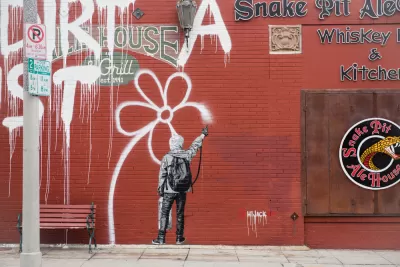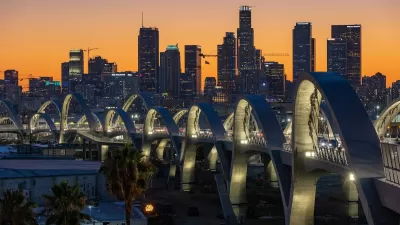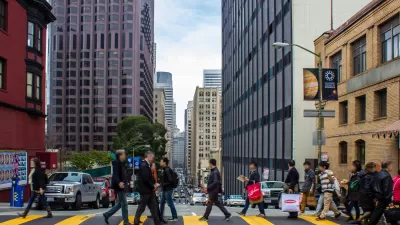As Downtown L.A. sees an impressive renaissance, learn how the Fashion District in L.A. spurred growth through piloting the first-ever "Business Improvement District" program.

Over the last 20 years, the Fashion District in Downtown Los Angeles has contributed materially to a impressive renaissance. Much of this urban renaissance was spurred, or at least facilitated, by Kent Smith's leadership. Kent Smith, Executive Director of the Fashion District Business Improvement District (BID) for the last 17 years, talks with The Planning Report about how both L.A.'s first BID has contributed to downtown’s growing economic and social vitality. Smith, who is retiring, has left a legacy of leadership in Downtown L.A. and has helped other urban areas around the globe bring public and private leaders to create BID's to foster growth.
The Los Angeles Fashion District is the design, warehouse, and distribution hub of the clothing and fabric industry in Downtown Los Angeles. Spanning over 90 blocks, thousands of fast-fashion wholesale vendors line the streets of the Los Angeles Fashion District. Clothing companies that manufacture in the Fashion District include American Apparel and Andrew Christian. Almost 20 years ago, Smith saw a need to create culture, cohesion, and relationships between these businesses and the people who worked in the area.
Smith explains that "when we started, the Fashion District BID was an 18-block pilot project. There hadn’t been a BID in Los Angeles, and we had to show people what we could accomplish. That pilot has since blossomed into a 100-block BID comprising more than 1,000 property owners. Today, we are still fundamentally purposed on what I call “clean and safe” programs, which I believe are the foundation for the revitalization of any neighborhood. We also have marketing and economic development programs, which collectively help put the neighborhood’s best foot forward."
As Los Angeles deals with interrelated homelessness and affordable housing crises, Smith opines on the role and responsibility of businesses and private entities. Smith asserts that "the business community has a role to play, certainly on the leadership side, to try to make politicians and bureaucrats see the people living on the street as being a priority."
Read more of Kent Smith's exclusive interview in The Planning Report.
FULL STORY: Recognizing Kent Smith’s Successful Leadership of LA’s Fashion District BID

Maui's Vacation Rental Debate Turns Ugly
Verbal attacks, misinformation campaigns and fistfights plague a high-stakes debate to convert thousands of vacation rentals into long-term housing.

Planetizen Federal Action Tracker
A weekly monitor of how Trump’s orders and actions are impacting planners and planning in America.

In Urban Planning, AI Prompting Could be the New Design Thinking
Creativity has long been key to great urban design. What if we see AI as our new creative partner?

King County Supportive Housing Program Offers Hope for Unhoused Residents
The county is taking a ‘Housing First’ approach that prioritizes getting people into housing, then offering wraparound supportive services.

Researchers Use AI to Get Clearer Picture of US Housing
Analysts are using artificial intelligence to supercharge their research by allowing them to comb through data faster. Though these AI tools can be error prone, they save time and housing researchers are optimistic about the future.

Making Shared Micromobility More Inclusive
Cities and shared mobility system operators can do more to include people with disabilities in planning and operations, per a new report.
Urban Design for Planners 1: Software Tools
This six-course series explores essential urban design concepts using open source software and equips planners with the tools they need to participate fully in the urban design process.
Planning for Universal Design
Learn the tools for implementing Universal Design in planning regulations.
planning NEXT
Appalachian Highlands Housing Partners
Mpact (founded as Rail~Volution)
City of Camden Redevelopment Agency
City of Astoria
City of Portland
City of Laramie





























